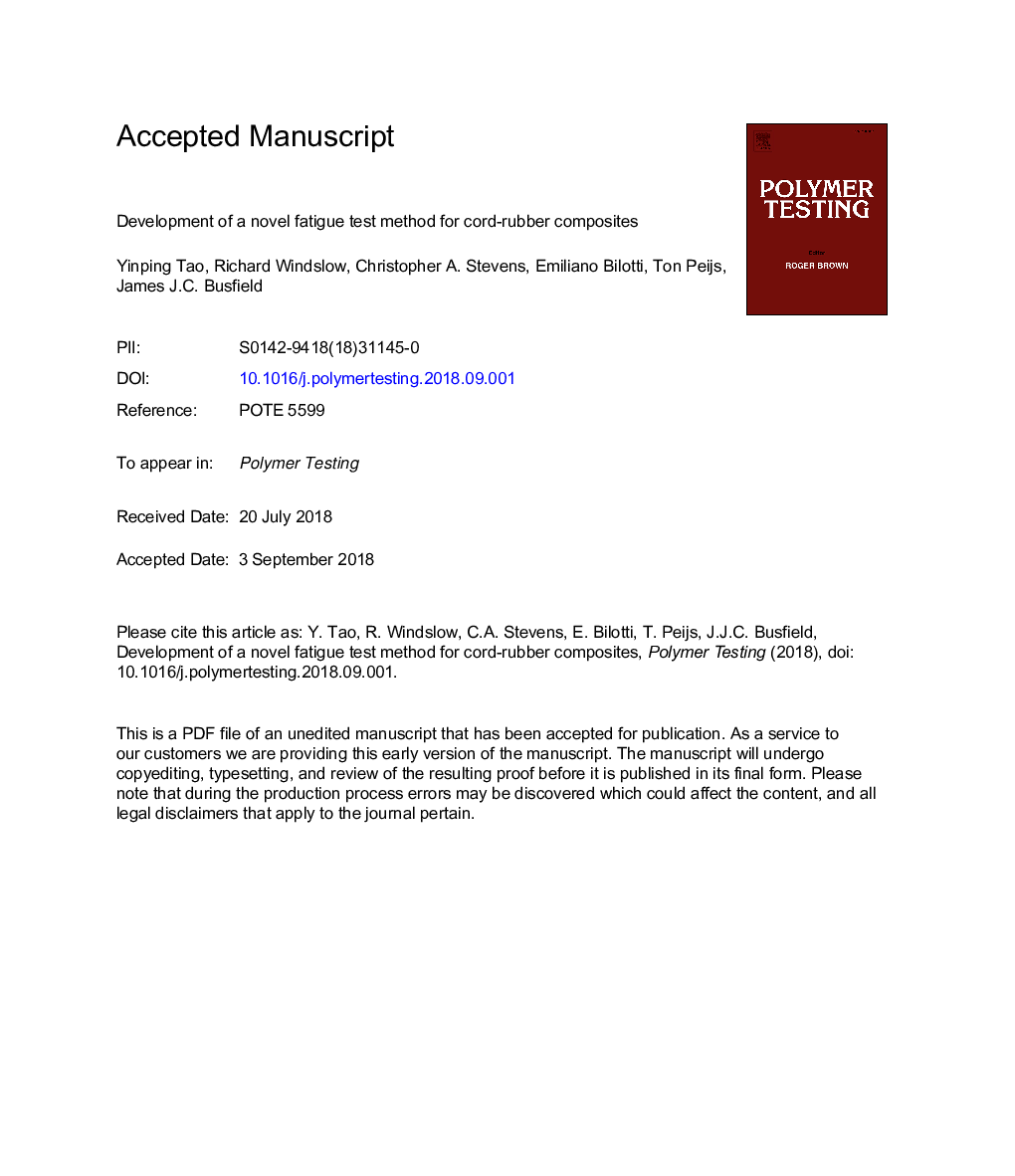| Article ID | Journal | Published Year | Pages | File Type |
|---|---|---|---|---|
| 10135300 | Polymer Testing | 2018 | 36 Pages |
Abstract
Fatigue testing of cord-rubber composites is of significant interest as components manufactured from these materials are typically subjected to repeated loading during service. In this work, initial fatigue tests on a single carbon cord reinforced hydrogenated nitrile butadiene rubber (CC-HNBR) model composite were undertaken using conventional wedge grips which are routinely employed for fatigue testing of cord-rubber composites. Damage evolution was monitored using thermal imaging, while post-failure modes were evaluated using scanning electron microscopy (SEM). Finite element analysis (FEA) was performed to understand the stress state in the gripping region. The observed failure mode in wedge grips based testing was found to be interfacial debonding as a consequence of shear stress concentrations induced by the grips, leading to a significant underestimation of fatigue life. Consequently, an alternative bollard based test methodology was developed for cord-rubber composites. Fatigue data generated using this novel bollard test set-up was compared with data obtained by using conventional wedge grips. Bollard-based testing resulted in tensile fatigue behaviour dominated by cord failure rather than failure by interfacial debonding during accelerated laboratory fatigue testing, making the developed test methodology better suited for the characterisation of intrinsic fatigue behaviour of cord-rubber composites.
Related Topics
Physical Sciences and Engineering
Chemistry
Organic Chemistry
Authors
Yinping Tao, Richard Windslow, Christopher A. Stevens, Emiliano Bilotti, Ton Peijs, James J.C. Busfield,
